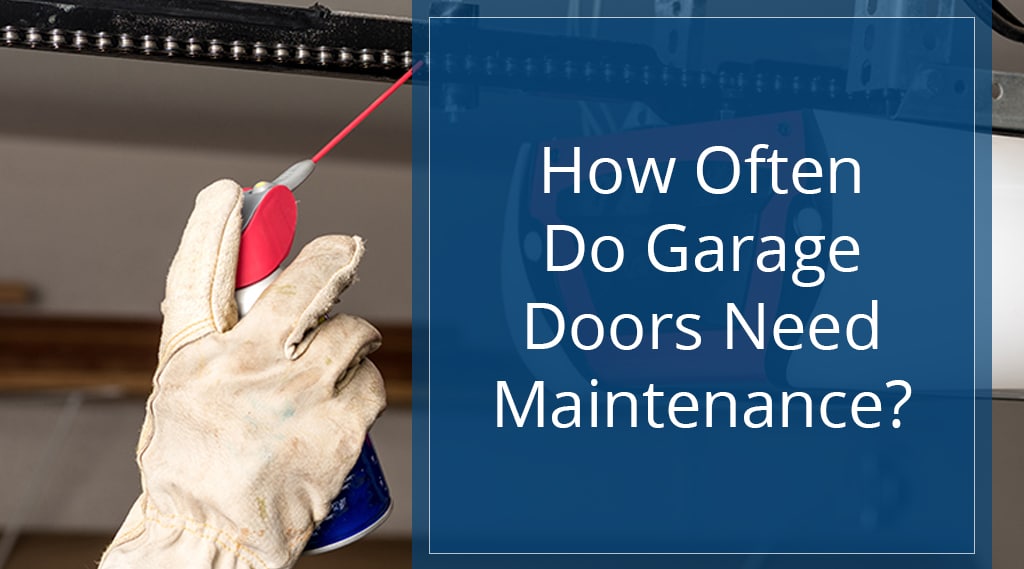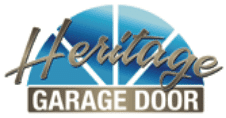
How Often Do Garage Doors Need Maintenance?

Garage doors are often one of the most used parts of your home and like anything that gets a lot of use, it gets worn down. Unfortunately, garage door maintenance often gets overlooked until a problem arises. Costly repairs are avoidable with professional preventative care or even occasional inspections. Read on to learn more about how to provide maintenance to your own garage.
How Often Do Garage Doors Need Maintenance?
It’s best to service your garage twice a year.
Ideally, contact a professional to schedule twice-yearly tune-ups. Think of your garage door maintenance like your dental appointments. You visit your dentist twice a year and practice daily preventative care.
Tune-ups typically include a top-to-bottom inspection. Technicians will look over every component to make sure they are in good shape and recommendations for repairs as needed. Many companies also include lubrication and balancing the garage door.
You can have your garage door system serviced any time of year but it’s best in the Spring and Fall to prepare for summer and winter. Like other parts of your home, your garage is affected by changes in weather. Identify and solve minor issues before they become big, costly, inconveniences later.
Get the most out of your garage door system with proper maintenance. In addition to regular tune-ups, there are several things you can take care of on your own.
DIY Garage Repairs and Inspection Tips
Use Caution:
The Door & Access Systems Manufacturers Association↗, DASMA, recommends that only trained technicians install garage doors.
Garage doors can weigh hundreds of pounds and can come down with enough force to cause serious injury. The springs on doors also pose danger, if springs break during a repair they can release tension and send pieces of metal flying. Technicians know how to work with these door systems, the safest and best option is to leave repairs and installations to experts.
That said, there are some things homeowners can take care of on their own. Remember to watch out for pinch points and loose parts.
Quick Fixes
- Tighten Up the Hardware
- Test the Garage Door Balance
- Inspect the Rollers
- Inspect the Cables
- Lubricate Moving Parts
- Test the Auto-Reverse Feature
Tighten Up the Hardware
The vibrations from constant use can loosen hardware in your garage door unit. If needed, take a look at and tighten all the roller brackets and bolts with a wrench.
Test the Garage Door Balance
An unbalanced door is caused by springs that have too much or not enough tension. To test the garage door balance:
- start by closing the door
- with the door closed, pull the release handle and disconnect the opener
- next, open the door by hand lifting it about halfway up
- the door should move freely and remain in the position you’ve lifted it to
- if the door falls there is a problem with the springs – contact a professional for assistance
- if the door shoots up there is a problem with the springs – contact a professional for assistance
- minimal movement in the door is acceptable
Inspect the Rollers
Door rollers are connected to the garage door and they slide along a track. Rollers should be inspected twice a year and replaced by trained professionals when they have worn down. Damaged rollers or a damaged track can cause mechanical issues and breaks.
Inspect the Cables
Inspect cables with your door in the open and closed position. Look for fraying, kinking, and otherwise damaged springs. Worn and broken springs can be a sign of other garage door problems. Contact a professional for assistance in diagnosing additional problems and replacing the cables. High-tension cables can cause serious damage if they fly off while tensioned.
Lubricate Moving Parts
Loud and squeaky doors aren’t just annoying, they are a sign that your door is not greased enough. Properly lubricated doors operate more smoothly and reduce the wear on rollers, tracks, and hinges.
- close the garage door and turn off the power
- clean the tracks to remove any dirt and debris that interfere with the rollers
- lubricate moving parts with a lithium-based grease, do not use WD-40 or oil
- do not spray nylon rollers, wipe off excess lubricant from rollers
Test the Auto-Reverse Feature
The auto-reverse feature is a safety mechanism that causes the door to open when something prevents it from closing. Test the feature by placing a brick or a piece of wood at the threshold. If the door does not automatically reverse when it hits the object it needs to be adjusted. Most doors have an adjustment knob on the motor.
Watch for Noisy and Drafty Doors
Watch out for noisy doors and drafty doors, these are typically signs that your door needs a repair.
Doors have weather seals along the bottom that keeps the elements out of your garage. Properly maintained seals improve the energy-efficiency of your garage door. Weatherstripping is available online and at brick-and-mortar retailers. Work with a partner to replace the weatherstripping.
- start by closing the door
- with the door closed, pull the release handle and disconnect the opener
- manually lift the door to an eye-level position and clamp the door with a pair of vice grips
- use a razor blade to cut a sample piece of the seal from your door to make sure you purchase the right type
- measure the width of the door and the width profile of the seal
- remove the old weather seal and clean before applying the new weather seal
- make sure to follow the same disconnecting process for safety
Call Heritage Garage Door for Repairs
Routine maintenance on your door is the best way to keep your door in the best condition. It’s also the best way to prevent wear and tear from turning into a major pain. If you hear or see any problems with your door and need help contact our team to schedule an inspection.
Heritage Garage Door operates in Southern California.


